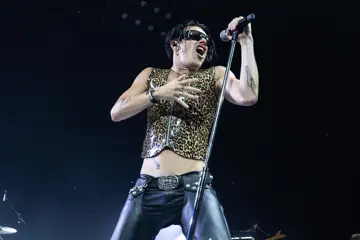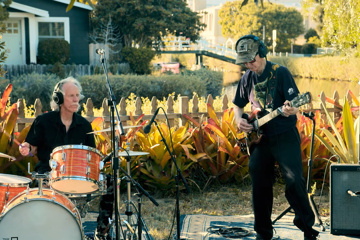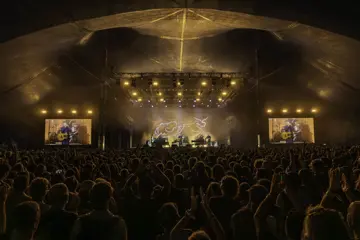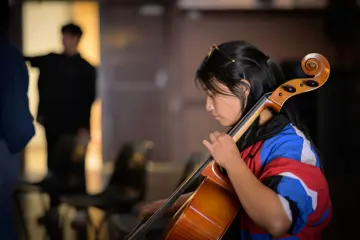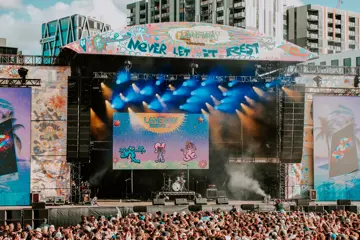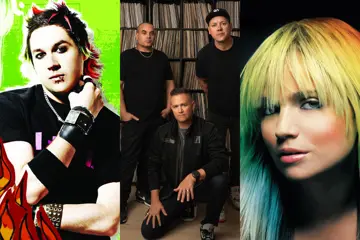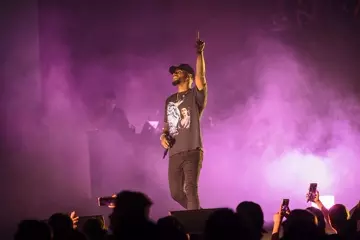The central business districts (CBDs) of the five major Australian capital cities are slowly displaying the same vibrancy as before COVID.
The total number of people has risen “significantly” since the previous 12 months, showing that initiatives by state governments and councils are working.
A new report from the Tourism & Transport Forum (TTF) stated it was due to the revival of nightlife, not workers returning to the city.
“Visitors, not workers, are driving this recovery,” said its CEO Margy Osmond.
“Their enthusiasm to explore and experience each city’s offerings is what’s propelling their revival.”
Osmond emphasised how important it was for state governments and local councils to continue with strategies to revive nighttime activity.
“This data shows how important it is to keep investing in our arts, entertainment and hospitality industries, as well as supporting major events,” she noted.
“These sectors play a pivotal role in revitalising our cities and contributing to their overall recovery.”
It depends on how much governments and councils reach out to the live music sectors, listen to their concerns and solutions, and follow it up with effective funding.
DSpark, which did the TTF report, collected data via mobile cellular towers, GPS, public transport, road network, immigration and census.
“Visitors” to CBDs in Sydney, Melbourne, Brisbane, Adelaide and Perth were only counted if they were Australian residents (i.e. no international tourists), aged 20+, spent at least 15 minutes in the CBD, and did not live there.
“Workers” were those who commuted to the CBD from the suburbs but did not live there.
SYDNEY
Don't miss a beat with our FREE daily newsletter
Sydney remained the least recovered of the five capitals, with visits and workers at 77% of pre-pandemic levels in April 2023, a jump from 67% in July 2022.
But returning to 100% recovery were weekend visits, rising to 122% between 4 am and 6 am.
Visits during weekdays lagged behind, at 80% except from 3 am -5 am when it was 119%.
This could be partly attributed to the current crop of 18—21-year-olds still getting used to clubbing every night (after not going out at all during the pandemic) and being one of the demographics that has drastically cut back on their spending.
New research from the 24-Hour Economy Office found 50% of respondents complained that going out at night was not affordable.
The NSW Government’s nighttime strategy has included grants for live music, reducing red tape, diversifying late-night businesses, extending opening hours for "low impact retail businesses", forming a new agency called Sound NSW and a mentoring program for late-night businesses.
To make running them easier, July 1 launches the $2-million-a-year Vivid Venues Fund to share 50:50 in upgrades such as ventilation, soundproofing and video screen technology.
MELBOURNE
The number of folks visiting or working in Melbourne’s CBD was at 78% of pre-pandemic levels in April 2023, up from 71% last July.
Weekends were effectively back at pre-pandemic levels (101%), but 75% on weekdays.
Late evenings for both had the greatest recovery, at 114% from 9 pm to midnight on weekends and 103% in April 2023.
Two years ago, the Andrews state government and the City of Melbourne moved to bring the CBD back to life with a $260 million scheme that offered $100 discounts on meals.
There was also a $200 million fund for a slate of arts and cultural events to entice people back, and "activating hospitality and retail spaces".
The state government also encouraged bars and music venues to stay open later.
The latest Victorian budget, out in May 2023, made provision for a Live Music Performers Fund for 10,000 gigs over the next four years, a new planning overlay to protect music venues.
There was an extra $23 million for the Major Events Fund to snare events and extended funding for the Victorian Music Development Office and the Always Live concerts with one-offs from Foo Fighters and Billy Joel.
BRISBANE
The Brisbane CBD continued to draw more commuters and visitors to the CBD, at 86% of pre-pandemic levels from 74% in July 2022.
The average was 89% on the weekend and 88% on weekdays.
Brisbane’s busiest time was in the early mornings, at 102% from 5 am – 6 am on weekdays and 98% from 5 am to 7 am on weekends.
These figures reflected Brisbane City Council’s post-pandemic initiatives for the CBD as free public transport, free parking on “slow days”, free coffee, live music, pop-up spaces, twilight markets, more safety and diversity on streets, and Fridays In The City to increase 12% in foot traffic in a six-week trial.
They also indicate the success of the Queensland Government’s strategies as funding Safe Night Precincts, and multi-million-dollar funding for live music-supporting venues that were hit by the pandemic to stabilise business operations and to offset revenue losses.
ADELAIDE
Activity in the Adelaide CBD was almost back to normal, with 94% of pre-pandemic levels in April 2023, up from 86% in July 2022.
Weekends were drawing more than before (104%) with weekday visitation at 93%.
Late evenings experienced the greatest recovery compared to pre-COVID-19 levels.
The number of people in Adelaide’s CBD from 10 pm to midnight on weekends was 122% of pre-pandemic levels, with those from 10 pm to midnight on weekdays at 111%.
This seemed an outcome of the City of Adelaide’s $1.34 million Reignite Adelaide plan, which it launched in 2021.
It included free parking on weekends, live music, street parties, less red tape, a greater laneway focus, more marketing and partnerships, greater greening, and encouraging outdoor dining.
Friday Night Live was for live music venues to increase their Friday night audiences, while promoters were exempt from paying fees to use council-owned spaces for shows or exhibitions.
This winter, the City is staging Winter Weekends from 5 pm until late, to keep attendance up in the CBD with live entertainment, fire pits and food and wine from city restaurants.
Also helping to invigorate the CDB was the government’s See It Live campaign to activate the live scene, a $1 million package to upgrade venues, and its branding as the Festival State increasing its profile as a music tourist destination.
Last year a new events package worth $10 million sparked five new music festivals.
PERTH
In April 2023, Perth boasted the greatest recovery of five capital cities.
There were more people in its CBD on weekends than before the pandemic on average (109%), while visits reached 94% on weekdays.
More specifically, the number from 9 pm –10 pm on weekends was 130% of pre-pandemic levels, while it was 112% from 3 am – 5 am on weekdays.
Perth CBD is currently in the middle of major property developments but two initiatives will draw more music fans in the future.
Six months ago, the City of Perth declared Northbridge its first Special Entertainment Precinct.
This would strike a balance with the volume in music venues and nightclubs with residents and specific guidelines for developers.
Planning Minister Rita Saffioti said this would “deliver real outcomes to support entertainment districts” and that “the State Government is keen for the final boundaries of the Northbridge’s core entertainment precinct to include the long-established venues of the area and Perth Cultural Centre.”
Last November came property developer’s Randal Humich $160 million plan to turn the rundown Liberty Theatre on Barrack Street into an entertainment precinct with concert and rehearsal spaces, and an exhibition gallery.
It’s hosted events including the Perth International Jazz Festival and Perth Fringe.
The TTF’s Margy Osmond concluded, “While the levels of CBD workers have indeed increased in every city, some level of remote work may be here to stay.
“This may be our new normal.
“If that’s the case, we need continued investment in industries beyond traditional office spaces to ensure a vibrant and thriving urban landscape, so CBD businesses don’t suffer.”

